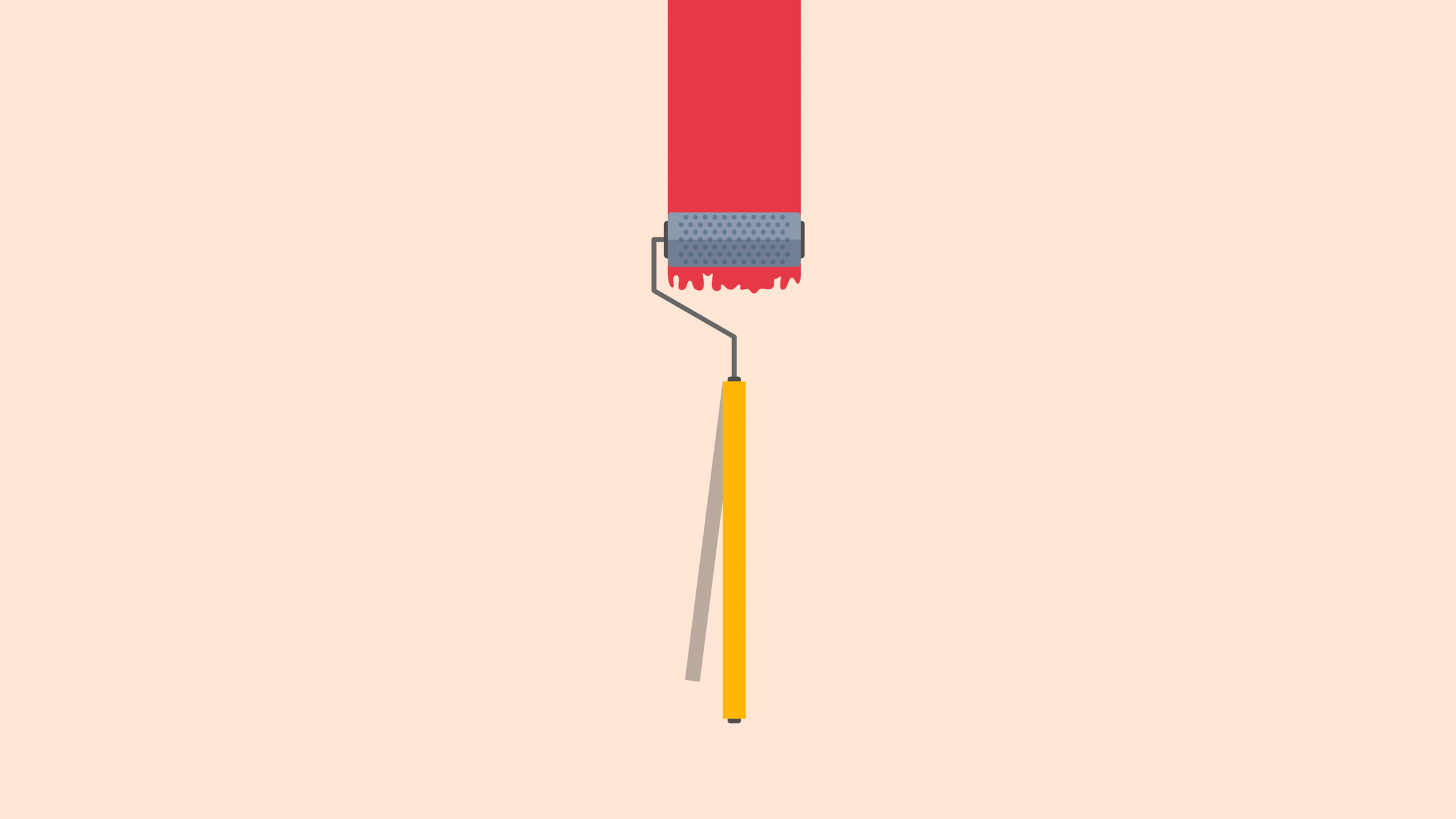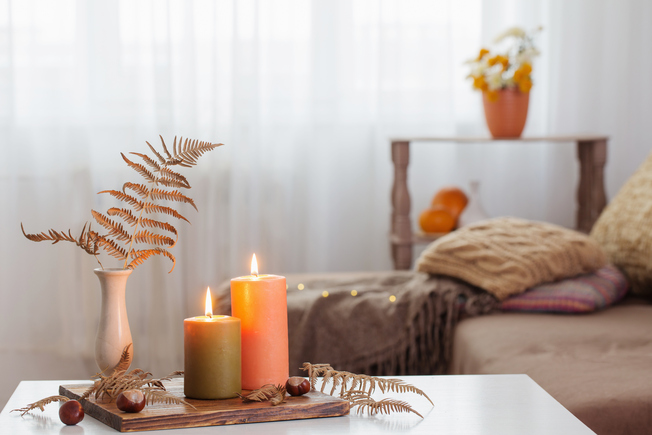
Everything You Need to Know Before You Paint Your Apartment's Walls
Oct 09, 2024
From logistics to labor, giving your apartment walls a paint job comes with some tricky territories. But with painting being one of the most popular ways to add a personal touch to your space, you’re not off-base to want to give it a shot. It is, however, best to come prepared with more than just paint and brushes — whether you’re painting your whole place or just an accent wall.
Before you start your DIY painting project you’ll want to know exactly what you’re getting into. That’s why it can help to approach the task with as much background knowledge and know-how as you can. Read on for our painting tips.
Are you allowed to paint your apartment walls?
First, you’ll want to know that you’re allowed to paint the apartment’s walls. Your lease should detail the policy your landlord upholds when it comes to this issue. Often, it will likely just tell you you’ll have to paint the walls back to their original color when you move out. Or it will tell you you’re prohibited from painting altogether.
In either case, if you still really want to paint your walls, you’ll want to contact your landlord. If your lease prohibits painting, check in with your landlord or property management company, tell them you read the lease, and confirm that their policy hasn’t changed. Have this conversation over email or text if possible so you can keep record if they agree to change their policy. If you’re allowed to paint, ask your landlord if he has the paint you’ll need to repaint the walls when you move out. This can help prevent any loss of your security deposit.
What is the best time to paint your apartment walls?
If you live in an area that has four seasons, you may choose to paint when the climate best aligns with the task at hand. For example, late spring and early fall tend to be more average humidities and temperatures, making it the sweet spot for painting. Higher humidity or low temperatures can both adversely affect paint drying time and a paint job’s quality, especially if you are using water-based paint.
Plus, depending on the size of your apartment walls, you’ll need at least a full uninterrupted day to get one room done. That means you’ll likely need to plan this endeavor for a weekend when you don’t have plans yet. Otherwise, you could end up with an unfinished project, furniture askew and covered with canvas, wet paint waiting to be stepped in, and an overall dragged out process.
What materials do you need to paint your apartment walls?
After you’ve chosen a color and found out how much paint you need (one gallon of paint will cover 400 square feet), you can plan a trip to your local hardware store or paint store to gather your materials for both painting and protecting the floors and furniture. Here’s what you’ll need:
- Primer (optional)
- Wall Paint
- Drop Cloths
- Rags
- Trim Paint Brush
- Painter’s Tape
- Stirring Stick
- Paint Roller Set
- Paint Tray
- Paint Pail
- Paint Can Opener
- Drywall putty, putty knife, and sanding sponge (if there are holes in wall)
How to Prepare to Paint Your Apartment Walls
Before you start painting, you’ll want to prepare the room to make sure the job is efficient and oops-free. First, move your furniture to the middle of the room so you can easily access every part of your walls’ surface area. Then, cover your furniture with drop cloths to avoid splatters, drips, and stains on your floors and furniture — latex paint is very difficult to remove from fabric.
Once your furniture is moved and covered, place drop cloths around the perimeter to protect the floor. Then, line the ceiling molding, baseboards, windows, and floorboards with painter’s tape to ease the process of trim painting. If there are holes in your wall, this is a good time to fill them and sand them smooth using your drywall putty, putty knife, and sanding sponge.
If your wall is stained or discolored, you may want to consider priming the walls first to seal the surface and prevent these stains from bleeding into your new paint. You may also need to prime depending on your color choices; for example, it’s important to prime your walls if they are a dark color and you are trying to paint over with a lighter paint color as well. Professional painters typically use primer to save time and money while painting dark walls.
How to Paint a Room
When you finally get to the exciting part of the interior painting process, you’ll begin by mixing the paint with your mixing sticks and “cutting in,” or using your trim paint brush to begin painting around the edges — right up against the painter’s tape you prepped with. Take your paint can with you as you cut into each wall so you can easily walk around and paint without having to return to your paint tray every time you need more paint.
Once you’ve painted around the trim, you’ll transition to using your roller to cover the large middle space on the wall. Pour paint into your tray, dip and roll the roller into the paint to cover it in your color, and begin painting carefully to avoid flinging paint or splashing yourself. You’ll likely need multiple coats of paint — be prepared to do at least a second coat.
How to Clean Up After Painting Your Apartment Walls
While your paint dries (if your space isn’t too crammed), you can begin to clean up. To clean your brushes, fill a container with soapy water, and let your brushes soak for a few minutes. Then, rinse the brush in the sink until all the paint is gone from the bristles.
You can re-use most paint jobs’ drop cloths and even pails and trays, so fold up your linens, gather your rags, spray down your trays and pails, and store them in a box. This will be especially useful if you have to re-paint the walls to their original color when you move out. If you have leftover paint, save it for touch-ups or use in another apartment painting project by hammering the lid back on the can.
The only thing left to do is let your paint dry, remove your painter’s tape, and begin settling in to life surrounded by a new color. Drying time can vary, especially depending on the type of paint you used, but typically, your walls will take around 24 hours to dry. Painting your walls can not only be a fun weekend activity, but it can also be a much-needed upgrade to your space that can make a huge difference to the apartment’s energy.
Top cities
Atlanta Apartments
1,578 apartments starting at $700/month
Austin Apartments
5,143 apartments starting at $500/month
Baltimore Apartments
1,323 apartments starting at $475/month
Boston Apartments
5,630 apartments starting at $1,050/month
Charlotte Apartments
2,871 apartments starting at $560/month
Chicago Apartments
6,335 apartments starting at $638/month
Dallas Apartments
5,623 apartments starting at $595/month
Fort Worth Apartments
2,639 apartments starting at $500/month
Houston Apartments
5,499 apartments starting at $618/month
Las Vegas Apartments
1,085 apartments starting at $650/month
Los Angeles Apartments
11,202 apartments starting at $430/month
Miami Apartments
484 apartments starting at $1,200/month
Milwaukee Apartments
1,177 apartments starting at $595/month
New York Apartments
5,154 apartments starting at $1,000/month
Oakland Apartments
781 apartments starting at $950/month
Orlando Apartments
845 apartments starting at $940/month
Philadelphia Apartments
3,118 apartments starting at $500/month
Phoenix Apartments
4,215 apartments starting at $600/month
Pittsburgh Apartments
767 apartments starting at $450/month
Portland Apartments
2,115 apartments starting at $750/month
Raleigh Apartments
1,243 apartments starting at $550/month
San Antonio Apartments
3,600 apartments starting at $574/month
San Diego Apartments
2,847 apartments starting at $650/month
San Francisco Apartments
484 apartments starting at $830/month
San Jose Apartments
425 apartments starting at $1,100/month
Seattle Apartments
3,286 apartments starting at $650/month
Tampa Apartments
803 apartments starting at $812/month
Washington DC Apartments
2,249 apartments starting at $910/month


